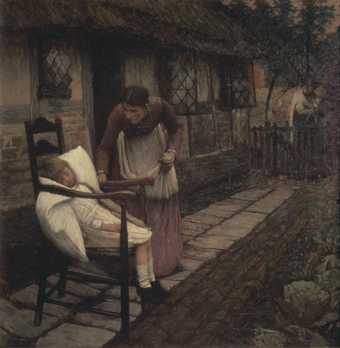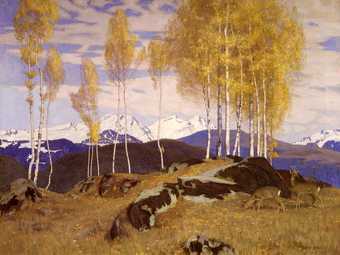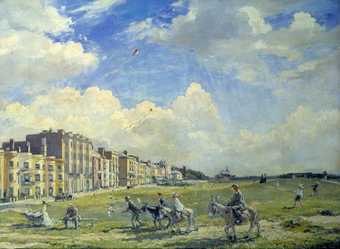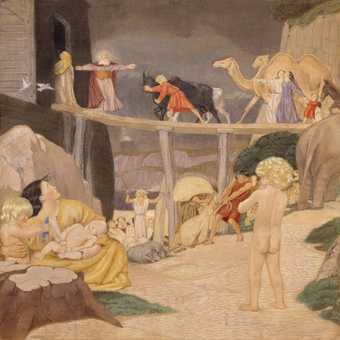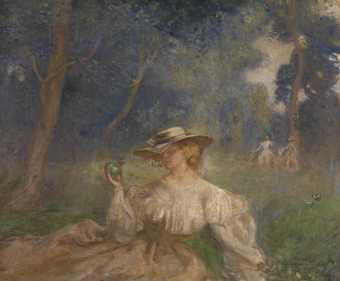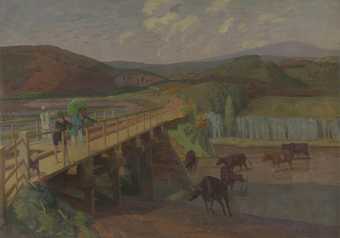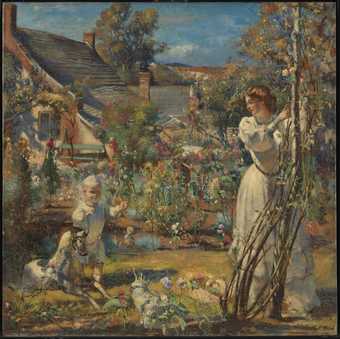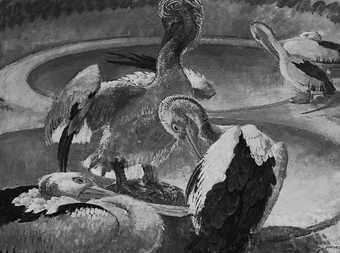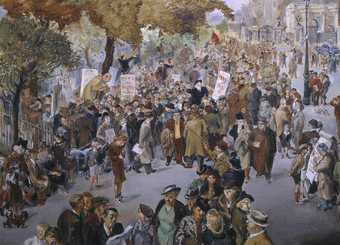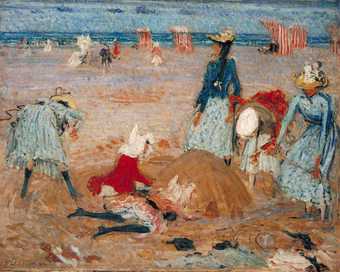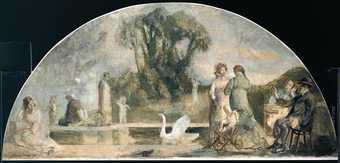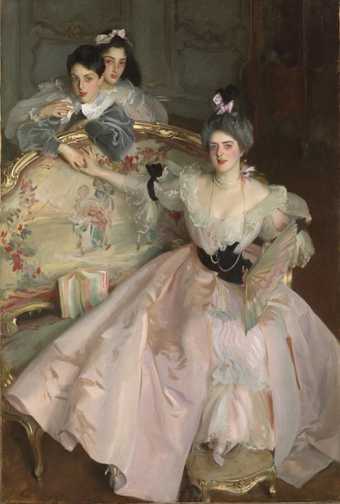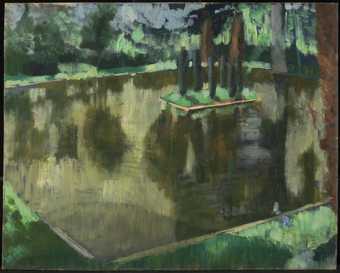
Not on display
- Artist
- Bernard Adeney 1878–1966
- Medium
- Tempera on canvas
- Dimensions
- Support: 2276 × 3048 mm
- Collection
- Tate
- Acquisition
- Purchased 1931
- Reference
- N04568
Catalogue entry
N04568 TOY SAILING BOATS (THE ROUND POND) 1911
Not inscribed.
Casein or wax medium on canvas (two strips of unequal width joined vertically), 89 1/4×120 (227×305).
Purchased from the Borough Polytechnic (Clarke Fund) 1931.
Coll: Commissioned by the Borough Polytechnic House Committee in 1911, and taken down in 1929 to be offered on sale or loan to various institutions or museums. Acquired for a nominal sum by the Tate Gallery 1931.
Lit: Virginia Woolf, Roger Fry, A Biography, 1940, pp.172–4, where she erroneously speaks of the murals as destroyed; John Rothenstein, Modern English Painters: Lewis to Moore, 1956, p.51 and note.
One of a series of seven decorations representing the pleasures of London, or ‘London on Holiday’, painted in 1911 for the students' dining-room at the Borough Polytechnic under the direction of Roger Fry, whose friend Basil Williams, Chairman of the House Committee, had originated the idea. The subject originally considered was ‘Getting the Food’.
Williams's intention was to show how halls and refectories could be made attractive at comparatively low cost, and at Fry's suggestion the paintings were made in a casein or wax medium on canvas so that they could be removed in the event of rebuilding. The total cost to the authorities was about £100. The room was demolished in 1929 but the murals were not transferred to another site in the building. They are all now at the Tate Gallery and comprise
Roger Fry's ‘The Zoo’ (N04571, a fragment), Frederick Etchells's ‘The Fair’ (N04572, a fragment), Duncan Grant's ‘Football’ and ‘Bathing’ (N04566 and N04567), Macdonald [Max] Gill's ‘Punch and Judy’ (N04570) and Albert Rutherston's ‘Paddlers’ (N04569).
Bernard Adeney recalled (letters of 31 December 1953 and 17 January 1954) that the scheme of decoration followed this order: from left to right across the first long wall came Fry's ‘Zoo’, Adeney's ‘Toy Sailing Boats’ and Grant's ‘Football’; at the top end of the hall was Etchells's ‘The Fair’; and on the return long wall were Rutherston's ‘Paddlers’, Grant's ‘Bathing’ and Gill's ‘Punch and Judy’. Each mural was surrounded by a diaper design.
Fry, Grant, Etchells and Adeney, who began the paintings in the summer vacation of 1911, afterwards invited Gill and Rutherston to contribute a panel each, and the scheme was completed by the autumn of that year. They decided to employ the technique of gradating the colour tones to a dark contour to increase the rhythm of the design, as in Byzantine mosaics.
When finished the murals were adversely criticized by staff and students, who considered them lugubrious, although Lewis Hind, then writing for the News Chronicle, did his best to publicize them as one of the first fruits of the exhibition Manet and the Post-Impressionists of November 1910–January 1911. Virginia Woolf (op. cit., p.173) records that a debate was held at the Polytechnic soon after the murals were finished, which Fry was asked to open. He believed that he had converted his audience to his view of the function of art in the modern State.
Bernard Adeney referred to his painting as ‘The Round Pond’, i.e. the Round Pond, Kensington Gardens, London.
Published in:
Mary Chamot, Dennis Farr and Martin Butlin, The Modern British Paintings, Drawings and Sculpture, London 1964, I
Explore
- architecture(30,960)
-
- garden structures(1,939)
-
- park(320)
- recreational activities(2,836)
- clothing and personal items(5,879)
-
- parasol(66)
- pram(43)
You might like
-
Henry Herbert La Thangue The Man with the Scythe
exhibited 1896 -
Adrian Stokes Autumn in the Mountains
exhibited 1903 -
Sir Walter Russell Donkeys and Kites
exhibited 1909 -
Margaret Gere Noah’s Ark
c.1909 -
Charles Conder Windy Day at Brighton
c.1904–5 -
Charles Conder A Summer Afternoon: The Green Apple
1894 -
Walter Bayes The Ford
c.1917–20 -
Henry Tonks Summer
1908 -
Philip Connard Pelican Ponds
exhibited 1930 -
Grace Golden Free Speech
1940 -
Philip Wilson Steer Boulogne Sands
1888–91 -
Stanislawa De Karlowska Swiss Cottage
exhibited 1914 -
Rodney J. Burn Waterlow Park, Highgate
c.1924 -
John Singer Sargent Mrs Carl Meyer and her Children
1896 -
The Hon. Dorothy Brett Pond at Garsington
1919

